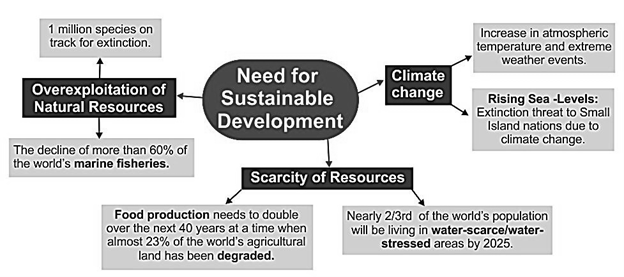Pillars of Sustainability
The term sustainability was first used in 1987 in Brundtland Commission (World Commission on Environment and Development) report- Our Common Future.
Sustainable development is defined as the development that meets the needs of the present without compromising the ability of future generations to meet their own needs. It calls for concerted efforts towards building an inclusive, sustainable and resilient future for people and planet.

Pillars of Sustainability
- Environmental Sustainability: It means that we are living within the means of our natural resources. To live in true environmental sustainability, we ....
Do You Want to Read More?
Subscribe Now
Take Annual Subscription and get the following Advantage
The annual members of the Civil Services Chronicle can read the monthly content of the magazine as well as the Chronicle magazine archives.
Readers can study all the material before the last six months of the Civil Services Chronicle monthly issue in the form of Chronicle magazine archives.
Related Content
- 1 Biodiversity Hotspots of India
- 2 Environmental Conventions
- 3 Levels of Biological Organization and Diversity
- 4 Types of Biomes
- 5 Ecosystem Functioning
- 6 Organisms and Their Environment
- 7 Environment in Brief
- 8 Environmental Pollution
- 9 Wildlife Conservation Projects in India
- 10 Global Conventions
Ecology & Environment
- 1 National Forest Policy
- 2 National Environment Policy
- 3 National Water Policy
- 4 Wildlife protection act 1972
- 5 Forest Conservation Act 1980
- 6 Scheduled Tribes And Other Traditional Forest Dwellers Act, 2006
- 7 National Plan for Conservation of Aquatic Eco-System
- 8 Wetland (Conservation and Management) Rules 2010
- 9 Wildlife Crime Control Bureau
- 10 Central Zoo Authority

